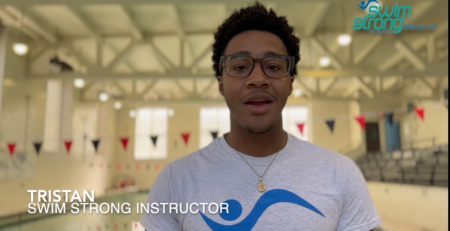Flexibility
Flexibility is important at any age. Thanks Coach Paul Barry for helping us understand how important this is for our overall health!
 Most people have likely heard of flexibility & many have ideas around what it means. Flexibilities definition may well be different. It’s possible to have a very detailed anatomy & physiological definition but it’s not needed. Flexibility in simplicity is the ability of our soft tissue (muscles) to stretch. Physiologically an accurate definition would be – the range of movement in a joint or series of joints & the length in muscles that cross the joints to induce a bending movement or motion. Flexibility while simple is also complex. People being innately flexible throughout their entire body holds no truth. Being flexible in a joint or series of joints doesn’t imply they will be flexible in others. You can be very flexible in your upper body but lack flexibility in your lower body. Flexibility in a joint can also relate to a specific movement in that joint but not include all movements e.g. able to perform the splits on one side but not on the other.
Most people have likely heard of flexibility & many have ideas around what it means. Flexibilities definition may well be different. It’s possible to have a very detailed anatomy & physiological definition but it’s not needed. Flexibility in simplicity is the ability of our soft tissue (muscles) to stretch. Physiologically an accurate definition would be – the range of movement in a joint or series of joints & the length in muscles that cross the joints to induce a bending movement or motion. Flexibility while simple is also complex. People being innately flexible throughout their entire body holds no truth. Being flexible in a joint or series of joints doesn’t imply they will be flexible in others. You can be very flexible in your upper body but lack flexibility in your lower body. Flexibility in a joint can also relate to a specific movement in that joint but not include all movements e.g. able to perform the splits on one side but not on the other.
The benefits of flexibility
There are numerous benefits of improving your flexibility.
- Makes everyday activities easier on your body.
- Enhances freedom of movement.
- Improves blood & nutrient circulation to tissues.
- Releases muscle tension & soreness
- Reduction in levels of pain.
- Increases physical & mental relaxation.
- Improves posture & balance.
- Enhanced physical performance.
- Improves levels of muscle strength.
- Improvement in strength provides a reduction in injuries.
- Creates a more positive state of mind.
Forms Of Flexibility
There are three specific forms of flexibility which are grouped according to the various types of activities involved within athletic training.
Dynamic Flexibility is the ability to perform dynamic movements of the muscles to bring a limb through its full range of motion in the joints.
Static-Active Flexibility is the ability to assume and maintain extended positions using only the tension agonists & synergists while the antagonists are being stretched. An example would be standing stationary, lifting a leg & holding it high without any external assistance.
Static-Passive Flexibility is the ability to assume extended positions & to maintain them using your own weight, the support of your limbs or an apparatus. This form of flexibility is what most people think of as flexibility. This form doesn’t need to rely solely on your muscles e.g. The splits.
A flexibility training program can be made up of a variety of stretching techniques including Dynamic, Static-Active, Static-Passive, Ballistic, Isometric & PNF.
Factors Limiting Flexibility
Personal flexibility is derived from many factors. All of the following have an influence on an individual’s range of motion about a joint i.e. They directly affect a person’s flexibility.
Joint Structure, Ligaments, Tendons, Muscles, Skin, Tissue Injury, Activity Level, Age, Sex,
Fat (or Adipose) Tissue, Age, Sex, Body Temperature, Injury, Inactivity, Lack of stretching,
Lack of soft tissue mobility that surrounds any joint (Muscles, Ligaments, Tendons, Joint Capsules), Muscle Length of multi-joint muscles, Genetics,
A key take home is that Flexibility can & does enhance your Quality Of Life!
Our Guest Blogger is Paul Barry from Australia. He works in the field of High-Performance Sports. He is highly experienced & has qualifications in diverse fields within the industry including Swimming, Strength & Conditioning, Advanced Nutrition, Sports Supplementation, Macro Nutrient Profiling, Anatomy & Physiology, The Psychology & Science of Winning & various Body Work modalities. He has Coached & Consulted in Multiple Sports with a focus on Swimming. He has experience with Junior’s through to International Athletes on their National Teams.
Paul is highly experienced in creating Annual Plans broken down into Training Cycles. With high level athletes he holistically link’s together all elements of each Training Phase. This engages input from all training aspects, so they directly relate & are in harmony to the current Phase Goal i.e. Nutrition, Gym, Dry-Land, Core Development etc. directly relate to the Training Phase.
Paul can be contacted either by Email or via his LinkedIn Profile. pbelitecoach@gmail.com



